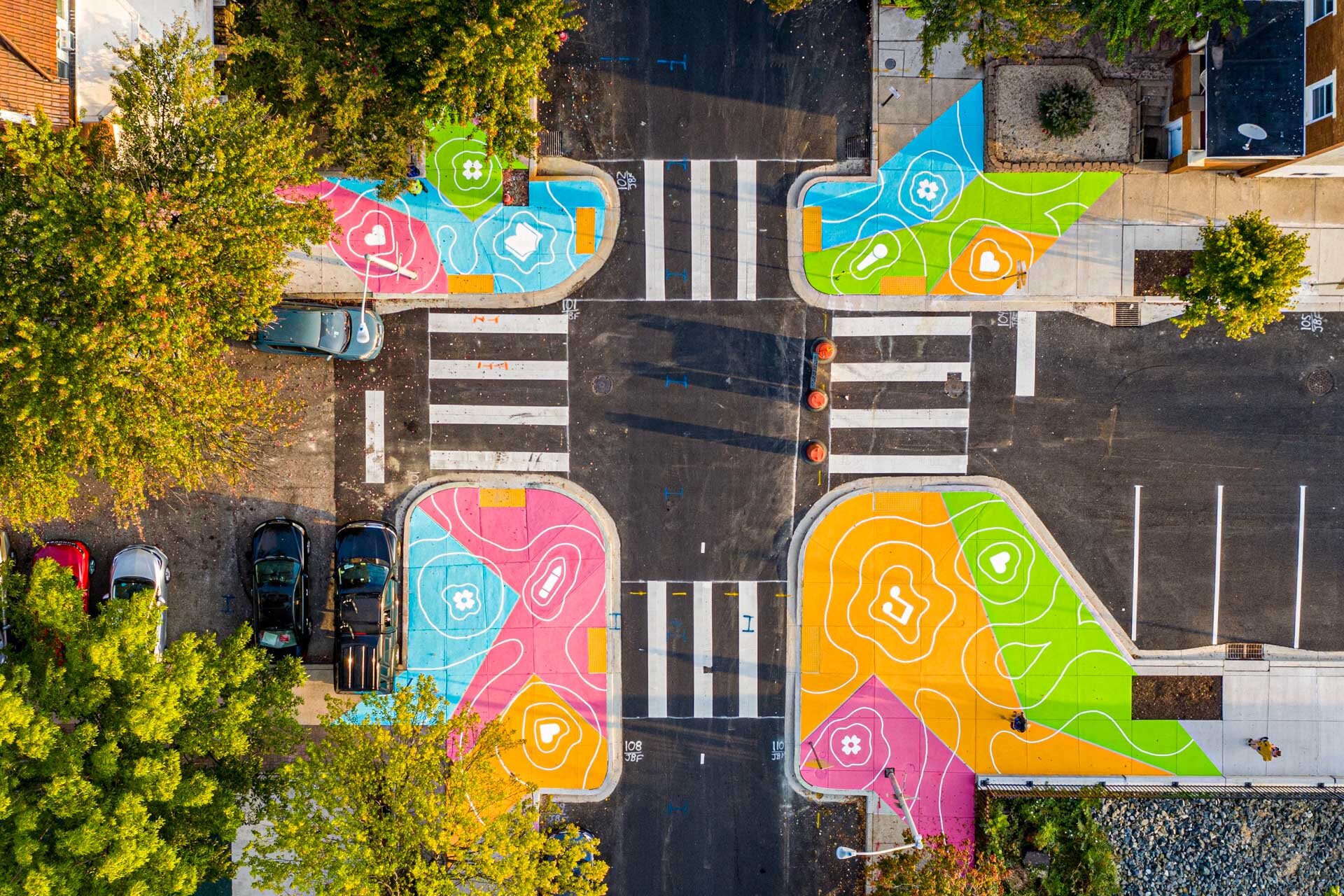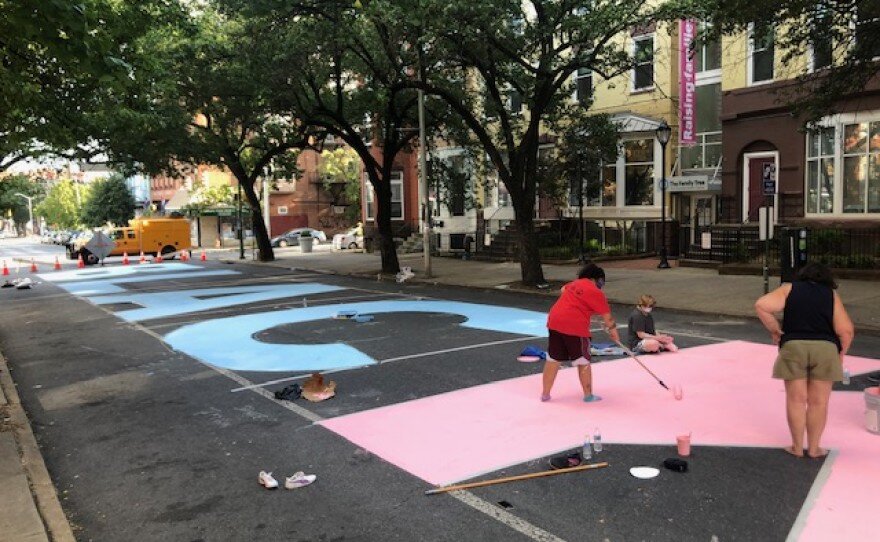For a long time, the Department of Transportation has run an Art in the Right of Way program. First, let’s break down what that means.
The Baltimore City Department of Transportation (DOT) controls the Right of Way, which means that they dictate how spaces reserved for the purpose of transportation (aka roads, sidewalks, and trails) are used. This is important because that means any temporary or permanent changes on Baltimore City roadways have to be approved by DOT. It’s why people have to seek out Block Party permits to close down streets to car traffic for an event, why the MTA has to work with DOT to paint red bus lanes, and why DOT has to approve all artwork on our streets.
People have used the Art in the Right of Way program to do street murals, paint trail markers (did you know all of the green oval trail markers are painted by volunteers?), and traffic calming for years.
1 - Reverberations Crosswalk by Graham Projects; 2 - Black Trans Lives Mural by Baltimore Safe Haven; 3 - Gwynns Falls Trail marker
A few years ago, graduate students in MICA’s Social Design program asked the question: “How might we ensure pedestrians and bicyclists are seen and prioritized?” After working on multiple different types of visibility projects from reflective clothing to creatively lighting major roadways, the Made You Look team settled on creating more transparency and best practices on how to install traffic-calming art. Essentially, they sought to make the process of creating art in the right of way more accessible.
With these intentions in mind, they’ve worked with partners in the Maryland Department of Transportation Motor Vehicle Administration’s (MDOT MVA) Highway Safety Office (MHSO), public artists, and community members throughout the past couple years on a few traffic calming projects and recently released an “Art in the Right of Way Toolkit.” They’ve also been hosting corresponding workshops open to community members to attend and learn how they can implement traffic calming projects in their own neighborhoods.
Last week, we attended their Art in the Right of Way Workshop in the company of neighborhood leaders, public artists, and elected officials all looking to learn more about traffic calming art. During this session, the presenters and attendees emphasized the importance of community engagement from project conception to end, using a design thinking process. This means involving neighbors from the very beginning: learning from them what intersections and roads are dangerous for pedestrians, involving them in the design of the new art, and inviting them to participate in a paint day. Many attendees left the call excited to embark on a process of making their own neighborhood art.
In the Made You Look guide, you can find best practices for:
How to decide on location and design of the art through a community participatory process
How you can obtain an MOU from DOT to do an Art in the Right of Way Project
How to prepare for installation and how to install your public art
This Wednesday at 5:30pm, they are hosting their last community shareback and closing out their third year of the design program. You can join them at Whitelock Community Farm and screenprint your own reflective streetwear, get bike repairs from BKYE Collective, and check out the new “seasonal turn” crosswalk art at Whitelock & Brookfield!
Hopefully, we’ll be seeing more colorful art that makes our streets safer in neighborhoods all around the city.




